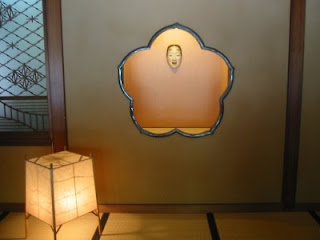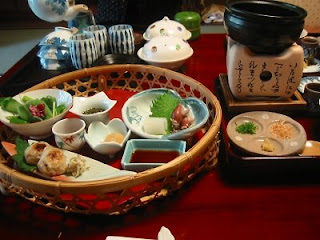*Lake Biwa: It's the largest lake in Japan; its size is the same as the island of Singapore, the circumference is about 241km (150 miles). It's the third oldest lake in the world (following Lake Baikal and the Caspian Sea), therefore it is a precious environment for many endemic species.
The day to take a trip will come soon.
The commuter train took me to Makino. It took 2 hours.
From such a familiar-looking urban view...
to this rural view. It feels like leaving the everyday world and entering another world.
It took more than one hour before I arrived at Makino station. Only three people got off the train. Heading to the hotel I reserved, I began to walk.
There was clear water, crowded water grass, and many fish, which are never seen in urban areas, in the stream. Also a black butterfly was flying near the stream. I was glad to see that the nature I had seen thirty years ago is alive.
After several minutes, I reached the hotel.
My room was located in front of a beach. For a time, I lied down on the bed and rested.
I drank water and took a small bag, then began to walk along the Lake Biwa beach, remembering childhood memories and thinking about how to lean the ladder to lean against the right wall
At the beach in front of the hotel... I thought, something smells, like rotten fish. What happened? I moved my viewpoint from the beach road to the water's edge. There were many fish bodies in a long line.
I was scared spitless. Was this the nature I saw a little while ago? Awful. But I also saw many fish swimming in the lake. Why?
I asked a man who cut down beach grass, "Why were so many fish dead?" He replied, "They are ayu (sweetfish). In this season, all ayu produce eggs and die. Ayu's life span is only one year."
That means the fish bodies are a seasonal event. I breathed a sigh of relief, but was still surprised. When I was about to think about how to live for rest of my life, I encountered the end of many lives.
Changing my mind, I walked with my iPhone shuffling my music library, wishing my iPhone select calm tunes.
(This island is Chikubu-jima, where "Gods live")
The first song which my iPhone selected was The Beach Boys / God Only Knows. I got a jolt from this good selection by co-incidence. After that, my iPhone continued to select such calm and deep songs: Oasis / Stop Crying Your Heart Out, Kirsty MacColl / Perfect Day, Paul McCartney / Somedays. Wonder of wonders, no noisy tune was played.
Ten minutes passed, I went by a group of high school students playing in canoes. I bet they never think back on the roads of their lives.

It took about one hour to reach these blocks. They were constructed in 1703 by an official who could stand no longer this area's water damages. He left a thing which is still alive through 300 years. It reminded me of Akira Kurosawa's film "Ikiru" ( "To Live")
A turned-back road. No sooner than I begun to go back to the hotel, my iPhone played Guns'n Roses. I thought it was my iPhone's magic end and selected J.S. Bach / French Suite by myself.
Those high school students, whom I saw outward were about to go back to school. They never realized, however, that they surely approached the turning point of their lives. At that time, I had passed my turning point and was walking down a road already traveled.
After arriving at the hotel, I took a nap, bath and had good dinner. With my satisfied mind, I relaxed and thought about "Do I make my ladder lean against the right wall?" "How do I find the right wall?" As a result, my mind is filled with thanks to my family, friends, co-workers, and customers.
I went to bed, although I didn't wanted to sleep, because I was full of thankful memories.































